The name Jammu is derived from its ruler who founded it. Raja Jambulochan founded this city and named it Jambupur which later changed to Jammu. Many historians and locals believe that Jammu was founded by Raja Jambu Lochan in the 14th century BC. During one of his hunting campaigns, he reached the Tawi River where he saw a goat and a lion drinking water at the same place. Having satisfied their thirst, the animals went their own ways. The Raja was amazed, abandoned the idea of hunting and returned to his companions. Recounting what he had seen, he exclaimed that this place, where a lion and a lamb could drink water side by side, was a place of peace and tranquility. The Raja commanded that a palace be built at this place and a city was founded around it. This city became known as Jambu-Nagar, which then later changed into Jammu.
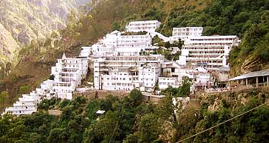
The town of Katra, which is close to Jammu, contains the Vaishno Devi shrine. Nestling on top of the Trikuta Hills at a height of 1700 m is the sacred cave shrine of Vaishno Devi, the mother goddess. At a distance of 48 km from Jammu, the cave is 30 m long and just 1.5 m high.
At the end of the cave are shrines dedicated to the three forms of the mother goddess — Mahakali, Mahalakshmi and Mahasarasvati. Pilgrims start trekking to the cave temple.
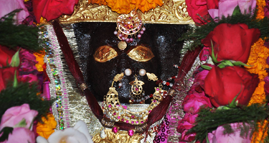
The Bahu fort, which also serves as a religious temple is situated about 5 km from Jammu city on a rock face on the left bank of the river Tawi. This is perhaps the oldest fort and edifice in the city. Constructed originally by Raja Bahulochan over 3,000 years ago, the existing Fort was more recently improved and rebuilt by Dogra rulers.
There is a temple dedicated to the Goddess Kali inside the fort popularly known as Bave wali Mata.
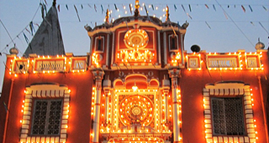
This temple is situated at the city center and was built in 1857. Work on the temple was started by Maharaja Gulab Singh, founder of the Kingdom of Jammu and Kashmir, in 1835 AD and was completed by his son Maharaja Ranbir Singh in 1860 AD.
The inner walls of the main temple are covered with gold sheet on three sides. There are many galleries with lakhs of saligrams.
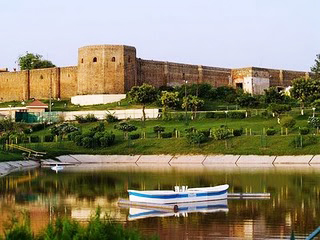
Bahu Fort, which also serves as a religious temple, is situated about 5 km from Jammu city on a rock face on the left bank of the river Tawi. This is perhaps the oldest fort and edifice in Jammu city. Constructed originally by Raja Bahulochan over 300 years ago, the fort was improved and rebuilt by Dogra rulers.
Inside the fort, there is a temple dedicated to the Goddess Kali, popularly known as Bave Wali Mata, the presiding deity of Jammu.
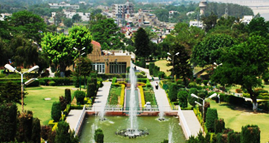
Baghe-E-Bahu located on the banks of Tawi river, is a Mughal-age garden. It gives a nice view of the old city and Tawi river. Bagh itself is very beautiful. There is a small cafeteria on one side of the garden. On the by-pass road behind Bahu Fort, the city forest surrounds the ancient Mahamaya Temple overlooking the river Tawi.
A small garden surrounded by acres of woods provides a commanding view of the city.
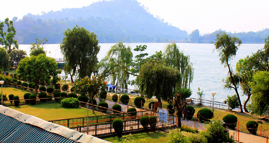
Situated 62 km from Jammu, Mansar Lake is a beautiful lake fringed by forest-covered hills, over a mile in length by half-a-mile in width. Besides being a popular excursion destination in Jammu, it is also a holy site, sharing the legend and sanctity of Lake Mansarovar.
On the eastern bank of Mansar Lake there is a shrine dedicated to Sheshnag, a mythological snake with six heads. The shrine comprises a big boulder on which are placed a number of iron chains.
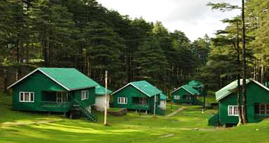
Patnitop is the most popular tourist spot of Jammu region. Located 112 kms from Jammu this famous hill resort is perched on a beautiful plateau, at an altitude of 2024 metres across which the Jammu-Srinagar Highway passes.
It has lush green meadow and pine trees which resembles with Gulmarg. Patnitop offers beautiful picnic spots, peaceful walks and breathtaking views of the mountains cape of the Chenab basin. In winter, it is covered with a white carpet of snow.